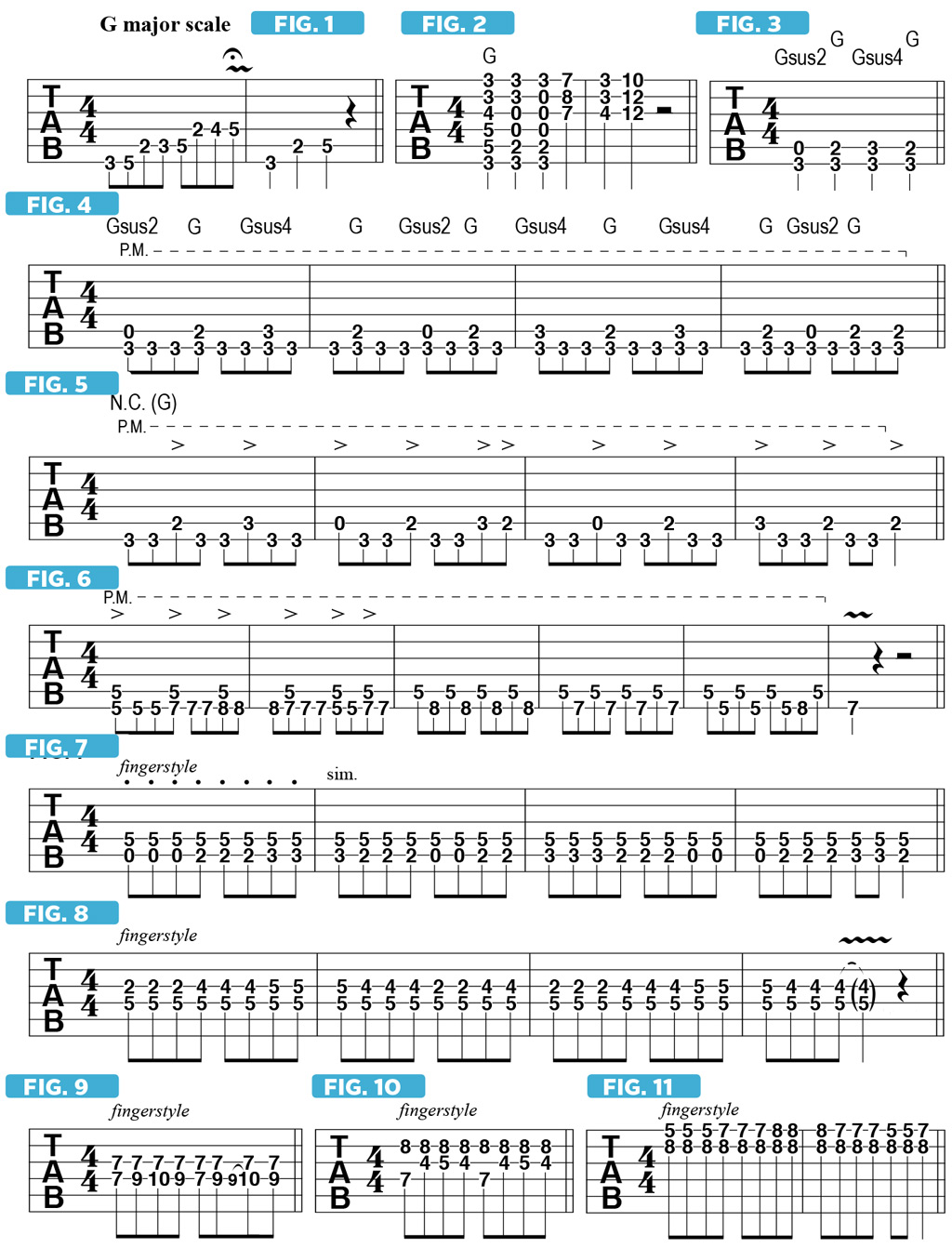Understanding Suspended Seconds and Fourths
In this brand-new Joel Hoekstra lesson, take a look at rhythm guitar and the incorporation and understanding of suspended chords.
Hello everyone, and welcome to my newest round of instructional columns for Guitar World. It’s great to be back! As always, I hope these monthly installments will shed some light on a variety of musical mysteries and prove useful to you in your daily playing.
The reality of playing guitar in a rock band is that 90 percent of your time is spent playing rhythm. While the great percentage of guitar instructional material focuses on lead playing, this month I’d like to address rhythm guitar and the incorporation and understanding of suspended chords.
What the heck are “suspended chords,” and, more specifically, suspended second, i.e., “sus2,” and suspended fourth, i.e., “sus4?” Any discussion of music theory is well served by starting with the major scale: bar 1 of FIGURE 1 illustrates the G major scale, comprised of the notes G A B C D E F#. Intervallically, this represents 1 (root), maj2, maj3, 4, 5, maj6, maj7. Major chords are built from the first (1), third (3) and fifth (5) scale degrees of a major scale; in the key of G, those notes are G B D, as shown in bar 2 of FIGURE 1; this is known as a G major triad. Any G major chord voicing, such as those shown in FIGURE 2, are built from the notes of a G major triad.

Suspended chord voicings are created by taking the major third and moving it either down one whole step to the second, which will result in a sus2, or up one half step to the fourth, which will result in a sus4. In the key of G, the sus2 is an A note and the sus4 is a C. The term “suspended” implies that the chord will resolve in some way, meaning that a suspended chord is often resolved, or followed by, a major chord, a minor chord, or a root-fifth chord.
An effective approach to understanding suspended chords is to start on the low strings and work your way up. As shown in FIGURE 3, if I sound a low G on my sixth string’s third fret, the suspended second can be sounded with the open fifth string, followed by the major third, B, fifth string, second fret, as well as the fourth, C, fifth string, third fret.
Let’s use these notes to devise some riffs: FIGURES 4 and 5 are played in straight eighth notes using pick-hand palm muting (P.M.), and a melodic line is sounded by moving between the three different notes on the fifth string.
Another approach is to pair the second, third and fourth degrees with the fifth of a chord instead of the root note, as shown in FIGURE 6: here, the A, B and C notes on the sixth string are paired with the fifth of G, D, sounded on the fifth string’s fifth fret. In FIGURE 7, the G root note is moved up one octave from where we began, while the A, B and C notes remain in the same lower octave. FIGURES 8, 9 and 10 replicate FIGURES 4, 6 and 7 an octave higher, and FIGURE 11 replicates FIGURE 4 two octaves higher.
New York City guitarist Joel Hoekstra plays for Whitesnake, the Trans-Siberian Orchestra, Cher and his own side project, Joel Hoekstra’s 13, whose latest release is Dying to Live.
Get The Pick Newsletter
All the latest guitar news, interviews, lessons, reviews, deals and more, direct to your inbox!









![Joe Bonamassa [left] wears a deep blue suit and polka-dotted shirt and plays his green refin Strat; the late Irish blues legend Rory Gallagher [right] screams and inflicts some punishment on his heavily worn number one Stratocaster.](https://cdn.mos.cms.futurecdn.net/cw28h7UBcTVfTLs7p7eiLe.jpg)
